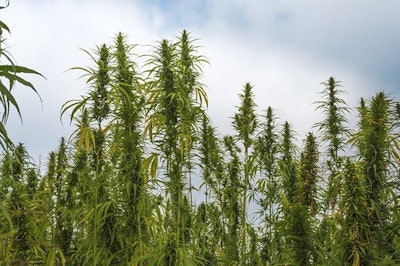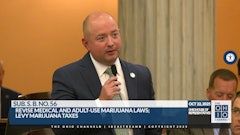
Beginning last month, West Virginia University professor Michael Gutensohn took up a U.S. Department of Agriculture (USDA) project to study the terpene-cannabinoid metabolic network of industrial hemp.
In other words, Gutensohn was tasked with learning more about how the hemp plant goes “hot” and crosses the 0.3% THC threshold. The THC cap may be an arbitrary statistic from outdated research, but it remains the law of the land in the U.S. Farmers across the country can benefit from any greater understanding into how THC interacts with the rest of the plant’s chemical compounds.
The USDA’s National Institute of Food and Agriculture awarded Gutensohn $200,000 to study industrial hemp over the next two years. According to West Virginia Explorer, he is “partnering with two former WVU faculty members—Nik Kovinich, assistant professor of systems biology at York University, and Nianqiang Wu, professor of chemical engineering at the University of Massachusetts at Amherst.”
Gutensohn’s work will join a field of emerging research on compliant industrial hemp genetics. While there is scattered talk of a possible raise on the THC limit (to 1%, perhaps, as some groups would like to see), the main issue at hand is keeping crops below that 0.3% threshold while at the same time keeping them profitable on the still-unsettled market. With many growers producing crops for CBD extraction, a worrying ratio becomes clear: As CBD rises, so too does THC.
“Despite the existence of large genetic diversity and in consequence a wide range of terpene and cannabinoid levels in Cannabis sativa, the research and knowledge about the biosynthesis of these compounds and the underlying genetics is still quite limited due to previous legal restrictions,” according to the USDA grant document. “The recent lifting of these restrictions has not only lead to a revitalized interest in industrial hemp as a crop, but also to the urgent need to understand how the biosynthesis of specific terpenes and cannabinoids are regulated so that they can be preferentially overproduced or eliminated in hemp varieties grown for particular uses.”
USDA Deputy Undersecretary for Research, Education and Economics Scott Hutchins said earlier this year that this new focus on industrial hemp research is part of the department’s “ability to develop value-added innovations.”
And while the industry awaits testing results and harvest yields later this summer, the long-term effects of this research will be very valuable for a new American crop that shows no sign of slowing down in the commercial marketplace.
"Whenever you see such a response in a plant, it normally means there’s genetic regulation happening,” Gutensohn told West Virginia Explorer. “To ultimately solve this problem, we need to have a better understanding of the genetic regulation. Keep in mind this is basic research. We want to understand what leads to this accumulation of certain metabolites. We’ll try to eliminate a gene that is involved in the formation of THC and see if that solves the problem."

























